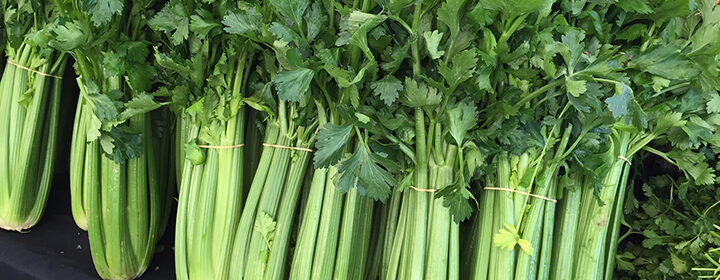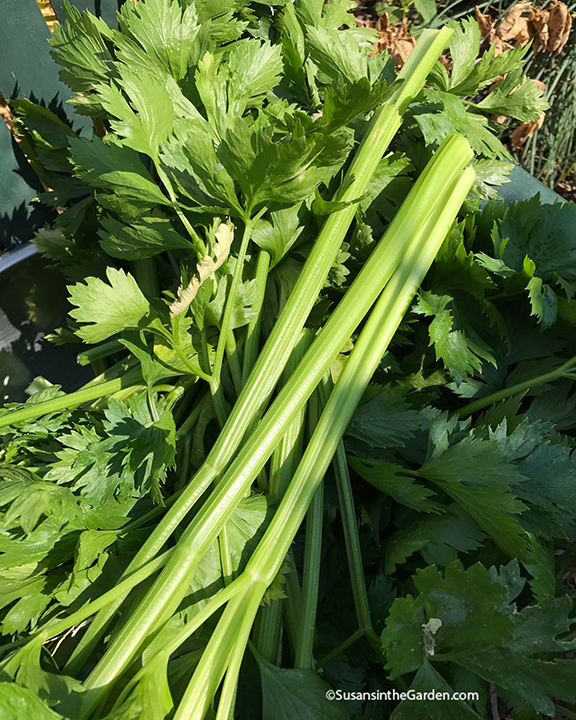Grow Celery

Do you think it’s crazy to grow celery? Find out why it’s much more practical, instead of relying on store-bought celery!
Latin Name: Apium graveolens
Plant Family: Carrot (Apiaceae)
Warm-season crop
Did You Know?
Not many gardeners think to grow celery in their garden. That’s because it’s so easy to pick up at the grocery store. But if you’re like me, you use a few stalks, then forget about the rest. Before you know it, the celery has turned to a mushy mess in the refrigerator. By growing your own celery, you harvest individual stalks as needed while the plant continues growing and producing more. There is no waste, especially if you chop and freeze the last of the stalks in the fall.
Plant Seeds or Seedlings? Start indoors from seed.
When: 10 weeks before the average last frost date in the spring. Transplant into the garden after all danger of frost has passed.
Days to Germination: 14 to 21 days
Depth to Sow: 1/8 inch
Spacing: Sow 2 to 3 seeds per inch. Transplant seedlings 6 to 12 inches apart.
Days to Maturity: 80 to 120
Cultural Information:
Celery seeds are slow to germinate and get growing so be sure to start them indoors early. Once the seedlings are 2 to 3 inches tall, feed them with diluted fish emulsion to boost their growth. Feed them again after transplanting them into the garden. Water the plants regularly throughout the season. I find my plants grow better if planted in a slightly shady area, such as on the north side of my pole bean arbor
Do the following if you wish to “blanch” the lower ends of the stalks so they are white. Cut the top and bottom off an empty half-gallon milk carton and slip it over the entire plant 2 to 3 weeks before harvesting. By preventing sunlight from hitting the stalks, they will turn white. This process will also give the stalks a sweeter taste.
Susan’s Picks: ‘Tall Utah’, ‘Tango’
Potential Insect Problems: Earwigs might chew on the leaves or stalks. Monitor regularly.
When to Harvest:
Using a knife, cut individual stalks about 2 inches above the root. While you can harvest any size of stalk, the younger ones are more tender and flavorful. Even though celery seedlings are planted outdoors after the chance of frost has passed, the plants are surprisingly tolerant of early fall frosts.
How to Cook & Preserve:
Celery is tasty in tuna sandwiches, salads, soups and stews. The leaves can also be used as a substitute for parsley. To freeze for later use in soups, stews or casseroles, chop celery, blanch for 3 minutes, plunge into ice-cold water, dry and store in freezer bags.
My Videos About Growing Celery:
Back to Vegetable Grow Guide Chart
Copyright: Susan Mulvihill, Susan’s in the Garden, SusansintheGarden.com.

